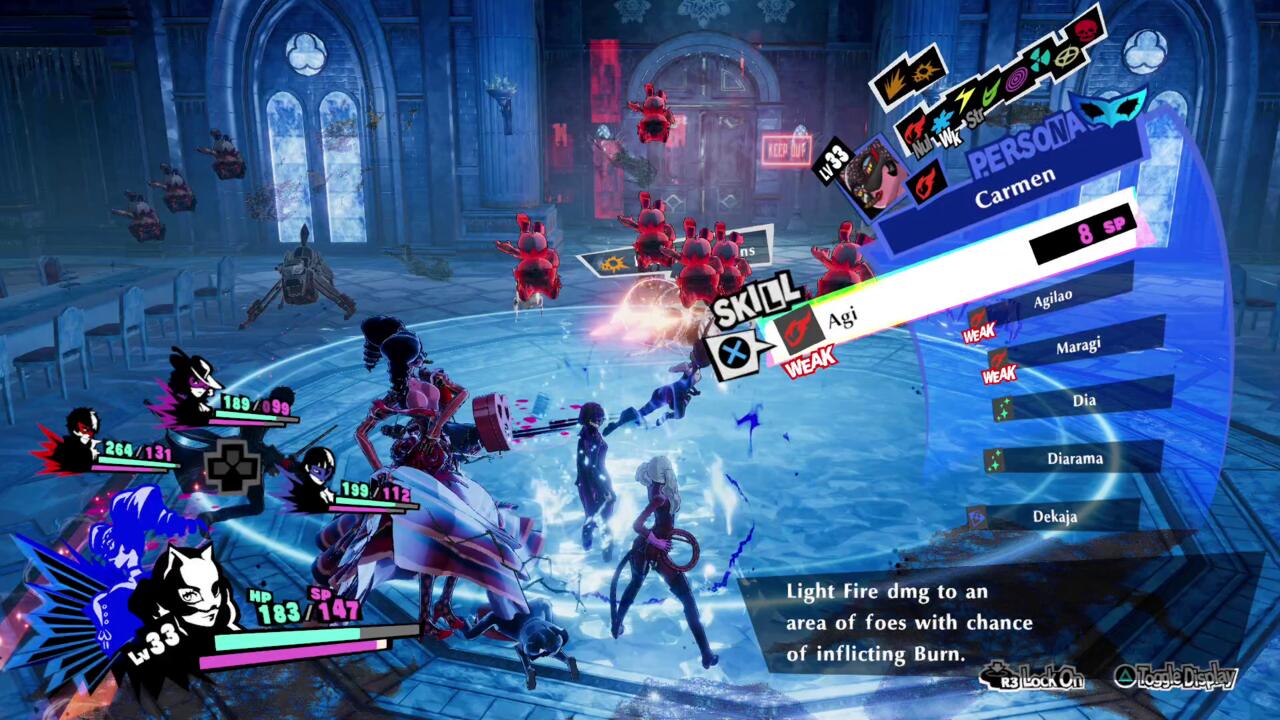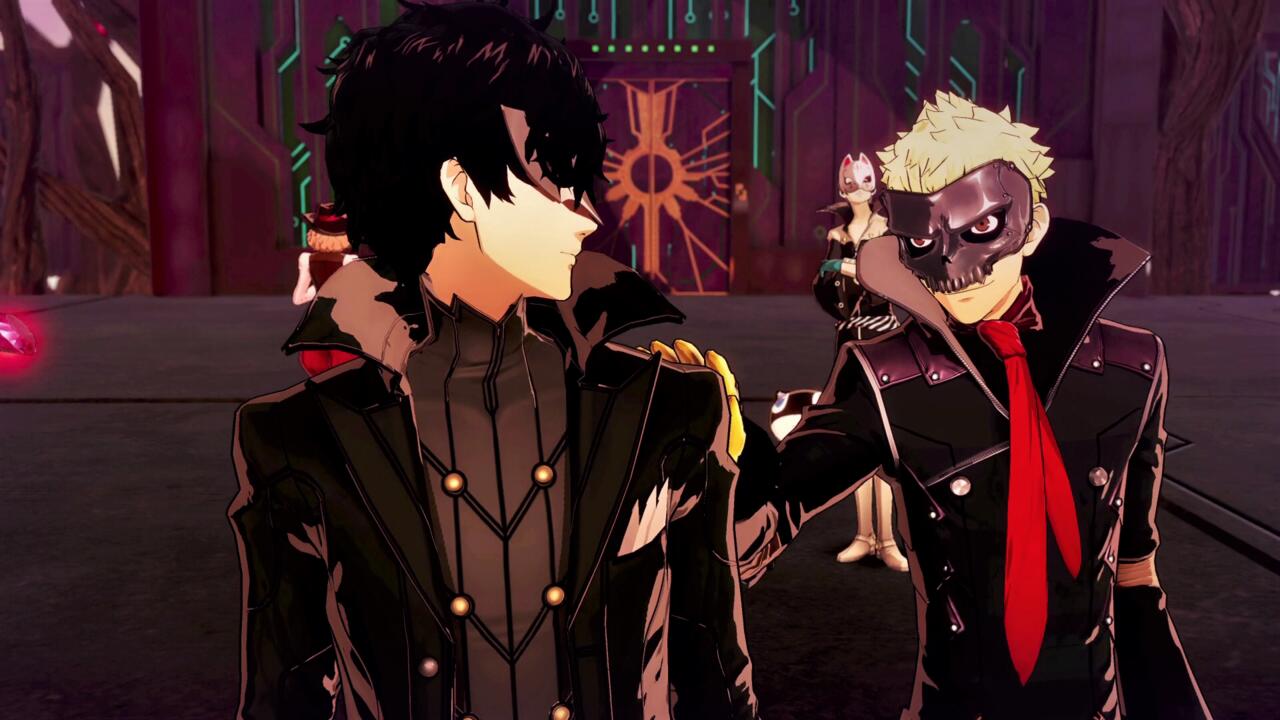Atlus and Koei Tecmo worked closely on Persona 5 Strikers, and two lead developers gave us their insight on making the combat system, building new characters, and what could be next.
By
Michael Higham
on
Persona 5 Strikers has a unique place among the musou-style action game adaptations of various franchises. Koei Tecmo and Omega Force are well-known for that high-octane one-versus-100 slash-em-up gameplay, namely through Dynasty Warriors, and brought that energy to an array of popular games and anime franchises such as The Legend of Zelda, Fire Emblem, and One Piece. But what makes Persona 5 Strikers so different is its dedication to the source material and the RPG elements–both in narrative and gameplay–that are key to Persona’s identity. Strikers worked so well that it stands out as its own Persona entry, and to the point where I almost forgot I was playing a musou-style action game.
It’s a testament to the collaborative efforts between Atlus and Koei Tecmo, because, as you can probably imagine, bringing the two design philosophies together didn’t come easy. I had a chance to talk with producer Daisuke Kanada from Atlus and director Kazutoshi Sekiguchi from Koei Tecmo to dig deeper into how the two teams were able to pull it off. Everything from incorporating Persona 5’s RPG combat mechanics to the new characters and narrative themes was on the table, and they even hint that there might be more in store between the two studios.
Now Playing: Persona 5 Strikers Video Review
This interview was conducted via email and through a translator, and it was edited for clarity and readability. The following content does not contain spoilers. If you want to know more about the game, be sure to read my , or if you haven’t played the original RPG, read about .
What was the collaborative effort like between Koei Tecmo and Atlus when coming up with the gameplay formula for Strikers? Were there compromises, what were the conversations like?
Daisuke Kanada: After establishing the basic flow of the gameplay and story, the concept of the title, the theme, etc., I remember that we worked on the story and action parts in parallel. If I had to pick one point where there was a distinct collaborative effort–it might sound contradictory–but I think it was the relationship that we established where we respected each other’s strengths, while making the most of our own. In terms of story, characterization, and worldbuilding, we tried to bring out the best of Persona.
On the other hand, for the action parts, we prioritized the knowledge and experience of Omega-Force. We wanted to create a title that could only be created through this collaboration, and one that would reflect the action-packed specialty of Omega-Force. In the same way, Omega-Force incorporated every single detail to bring out the unique feel of Persona 5. The event scenes, user interface, and soundtrack were all at a level that would have been unattainable if there hadn’t been the will to create a game true to the Persona style.
Kazutoshi Sekiguchi: As Kanada-san said, I believe that our most significant collaborative effort was having that relationship where we were able to knock our ideas against each other in order to realize each other’s strengths. They were relentlessly critical in pursuit of making the visuals and sound the best they could be, and when it came to action, we often had to explain our intentions to them.
As for the story, I remember that the staff members in charge discussed back and forth with each other to the point of exhaustion. When voice recording was about to start, the staff in charge spent more than a week in Atlus’ conference room, from morning until night, bouncing ideas off of each other. This was one of the most difficult points in the development of this title.

How challenging was it to incorporate many of Persona 5’s original elements into a new combat system?
Sekiguchi: A typical example of this would be the elemental skills and weaknesses. It’s an essential battle element that is unique to Persona, but in Strikers’ early days that mechanic didn’t fit that well into the design, and Joker’s Persona-changing mechanism didn’t serve much purpose. This was because in the beginning, the game was designed to be a “musou action” game, which is Omega-Force’s forte, so it was easy to annihilate enemies without having to exploit their weaknesses. We’d also limited the number of Persona skills that could be used in battle, and designed them to be used quickly as instant action controls.
In the process of having Atlus review the prototype and discuss it with the development team, we came to the conclusion that we needed to redesign the game more as an action-RPG, otherwise it wouldn’t feel like a Persona game. From that point on, we distanced ourselves from the conventional idea of musou action, and changed the direction of the game to increase the effects of fighting tactically and exploiting weaknesses. Along with this, we made various quality-of-life improvements such as freezing time while selecting Persona skills and displaying the enemy’s weak points. Once we had this in place, we were able to refine the effects of “1 More” attacks, All-Out Attacks, and Baton Passes.
The combat system turned out great, surely you have to make the most of it! Are there any plans for a follow-up game? or adapting this system for another game?
Kanada: There were a lot of challenges in creating Persona 5 Strikers, but we were very satisfied with the final game, and it has received high praise from the players. I don’t want this to be the end of this particular system, or the new characters. I personally would love to create another new title to follow this one.
Sekiguchi: If there is an opportunity, certainly! Kanada-san, Atlus-san, let’s stay in touch. (laughs)
What are some lessons you’ve learned from working on Strikers that you’ll take into future projects?
Kanada: In regards to this being a collaborative production, one of its main features, we learned quite a lot. I was reminded once again that when two developers take advantage of each other’s strengths and come together as one, even a title with the familiar Persona name can take on a striking new form.
Sekiguchi: Working with Atlus for the first time, we learned a lot from the project. That includes our lessons from their know-how of the RPG genre, something we hadn’t worked on before, and their attention to the story, cutscenes, and visuals.
More than anything, borrowing the wonderful Persona 5 IP, we were able to create a title that players will deem “a worthy sequel to Persona 5,” which boosted the confidence of all the development members and the technical skills of the team. The experience of developing this title itself has become a valuable asset for each and every one of us.

Humanity is beautiful in many ways, but people also have personal weaknesses and ugliness that they want to hide. That kind of honest portrayal doesn’t mean we give up and say, “This is why humans are no good,” but rather to send a positive message that even those aspects are part of human potential. That’s what I feel in both Shin Megami Tensei and Persona. – Daisuke Kanada, producer on Persona 5 Strikers
Zenkichi and Sophia are great characters and fit well with the rest, what’s it like to try incorporating new faces into a cast many fans already know and love?
Kanada: When we thought about adding new characters to the already-beloved cast, we were constantly worried about whether they would be accepted, whether they would stand out, or whether they would be overshadowed. That’s why we had many discussions with Omega-Force and the internal staff, and continued to examine and review every single line of dialogue.
Sekiguchi: We made a lot of suggestions for the new characters, but I remember we were both constantly testing the waters in the beginning. We had a lot of discussions. Once [Shigenori] Soejima-san (art director and character designer) completed his design, the shape of the character came into focus, the story was finalized, and the actors added their voices. I think that was the point where it finally felt like we hit the mark.
It was a very exciting experience to see how the writers, designers, and actors worked together to make the characters feel more real and more likable every day.
Kanada: After the release of this title, we received positive feedback from many people about the new characters, and all the staff, including myself, are very pleased to hear that. Personally, I’d like to tell the story of Sophia and Zenkichi’s lives after this game in some way.
Persona 5 Strikers says a lot about how trauma affects people and their actions, what are the things you want players to take away from the story?
Kanada: I think that all of the messages that the players take away after playing the game are their own answers. In creating this game, we made sure it was full of all kinds of themes and messages. But I think that if we tried to put them all into words ourselves, it might impact their significance.
Because gaming is a medium that involves playing it yourself, this makes the personal messages and impactful moments resonate in the players’ minds, and I think it’s safe to say that these impressions are the theme of Persona 5 Strikers.
[To Kanada-san] You’ve been with Atlus working on Shin Megami Tensei and Persona for a long time now. When you look back, what is it about these games that draws you to them?
Kanada: The fact that they depict human weakness. Humanity is beautiful in many ways, but people also have personal weaknesses and ugliness that they want to hide. That kind of honest portrayal doesn’t mean we give up and say, “This is why humans are no good,” but rather to send a positive message that even those aspects are part of human potential. That’s what I feel in both Shin Megami Tensei and Persona.
I think this is the reason why Atlus’ works root themselves in the memories of so many people, and also why I was attracted to them.

Strikers is full of amazing songs, what’s your favorite remix or new song and why?
Kanada: “You Are Stronger.”
It’s the opening track of this game, with lyrics written by Lotus Juice. Of course, all the songs are really cool and I like them all, but this song was made specifically to represent this title. I think it’s the perfect song for the Phantom Thieves of Hearts, and for how they give courage to everyone.
Sekiguchi: “Daredevil.”
It’s the song for the first battle. Combined with the context of the battle, I think this song truly symbolizes the collaboration between Omega-Force and the Persona team.
Got a news tip or want to contact us directly? Email [email protected]

